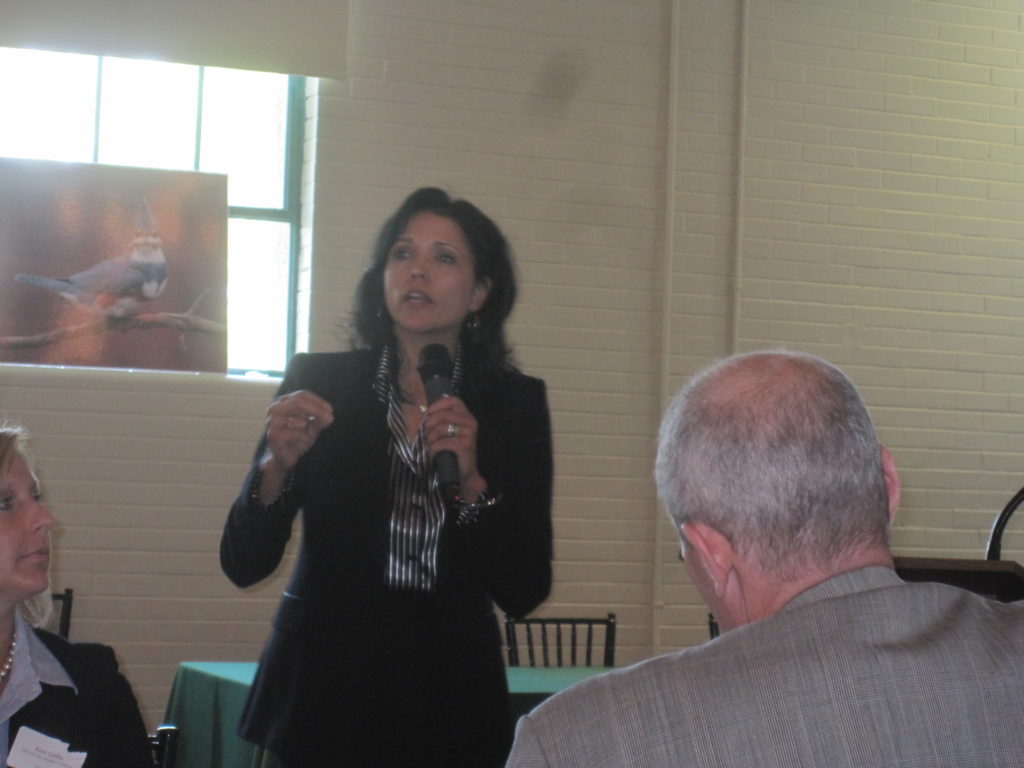 Metropolitan St. Louis is primed for transformational change, a change in the way we view light rail and what we build around it. According to Citizens for Modern Transit’s recent keynote speaker Katherine Perez, renowned Transit Oriented Development expert and partner with Estalano LaSar Perez LLP in Los Angeles, St. Louis is ready for a different way of thinking with regards to building and developing around the light rail infrastructure currently in place. We now have the opportunity to manage this change for the greatest benefit for the region.
Metropolitan St. Louis is primed for transformational change, a change in the way we view light rail and what we build around it. According to Citizens for Modern Transit’s recent keynote speaker Katherine Perez, renowned Transit Oriented Development expert and partner with Estalano LaSar Perez LLP in Los Angeles, St. Louis is ready for a different way of thinking with regards to building and developing around the light rail infrastructure currently in place. We now have the opportunity to manage this change for the greatest benefit for the region.
Is St. Louis ready to address the “last mile,” the area within a mile radius of light rail station infrastructure, as a connecting node for all modes of travel? Are developers, locally and nationally, ready to view St. Louis as a region with possibilities for mixed use development that are ‘right sized’? Is it as easy as St. Louis adjusting the lense on our proverbial glasses to provide a clearer picture of our assets and the possibilities out there for development and transit?
According to Ms. Perez, we are ready. There are steps that St. Louis can take to make sure these changes occur. “There are dogs being walked in downtown St. Louis, there is activity in the urban core on a Monday night which was not there 10 years ago, there are more and more residents in the downtown area – St. Louis is certainly on the edge and now is the time to make the plans,” said Ms. Perez. Historically, Metropolitan St Louis has been categorized as a slow-growth market with a fragmented political structure. This has created significant and symbolic challenges to accomplish major regional initiatives. Recent successful initiatives like Proposition A in 2010 and the successful HUD grant award of $4.6 million for the region, however, have been achieved in a spirit of collaboration and under the premise of improving the quality of life for the entire region.
Ms. Perez noted the success of the reinvigorated downtown central business district, the changes at Metro favorable to development, the economic tools in place like Tax Increment Financing (TIFs) and Transportation Development Districts (TDDs), the public sector support, the recent HUD Sustainability Grant award opening doors for further funding only available to a small pool of contenders, and the potential for infill or revitalization of neighborhoods and communities near the current light rail infrastructure. All provide opportunity to move good, ‘right sized’ development that fits in with the fabric of the surrounding communities forward.
Perez emphasized that TOD does not create a market for development, but enhances local economic conditions and development opportunities for mixd use nodes along a transit corridor. She outlined ten principles that the Urban Land Institute (ULI-TOD_Report_2012) recently released in bringing development to light rail, creating the ‘last mile,’ and forming a sense of place.
- Invest in walkability
- Increase transit to increase value
- Concentrate new development in nodes
- Start with Downtown Oriented Development
- Pursue catalytic public projects
- Tackle parking
- Invest according to your ambitions
- Create cohesion with existing neighborhoods
- Get the density right
- Educate the public on Transit Oriented Development
Is St. Louis ready to take the leap? Ms. Perez indicated that the public, private and non-profit sectors have key roles to play in moving this process forward. The public sector’s role is to lead the community to create a vision for development. The public needs to be engaged and committed to the project. They also need to create meaningful incentives for development. California has recently lost its ability to create TIFs for development. “This has been a critical blow to our ability to development,” said Perez.
The private sector needs to provide capital and expertise to bring the community’s vision to fruition. She indicated that there are new ways of bringing capital to the table working in other cities, such as the Mile High Transportation Fund in Denver and the Transit Oriented Affordable Housing Fund.
Finally, the non-profit sector needs to convene the players, educate the community, push for good design and provide a venue for new ideas.
So is it really that simple? Can St. Louis change its focus? Can we create good right-sized development around MetroLink; a nationally acclaimed, well-patronized infrastructure system that the region has invested over a billion dollars to create? Additionally Perez believes St. Louis is in a unique position to build upon lessons learned from other regions – to avoid mistakes and emulate success. If Ms. Perez thinks we are on the way, then let’s make sure she is right . . . Let’s Build around Light Rail St. Louis!
Katherine Perez Presentation for CMT’s Let’s Build Around Light Rail event
